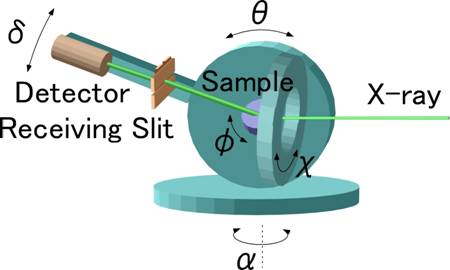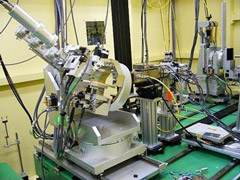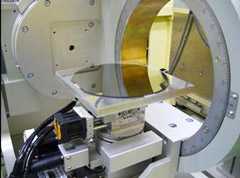- HOME
- SAGA Light Source
- User Information
- Beamlines
- BL15 : experimental equipment
BL15 : experimental equipment
X-ray diffraction (for crystals and thin films)
-
In-plane and out-of-plane measurements
-
Reciprocal space mapping
-
Pole figure measurements
-
X-ray reflectivity measurements
Multi-axis diffractometer
Basic axes (angular resolutions)
q (0.0001°)
d (0.0002°)
χ (0.001°)
φ (0.001°)
α (0.001°)
Detector, etc.
-
Incident X-ray monitor: ionization chamber
-
Detector: NaI scintillation counter
-
Soller slit: resolutions: 0.2° and 0.4°

Schematic view of diffractometer
-
BL15 is equipped with a multi-axis diffractometer for X-ray diffraction measurements of single crystals or thin films. By combining five angles (q, d, χ, φ, and α), a wide reciprocal space can be accessed.
-
The sample is mounted at the center of the diffractometer. In the case of a small crystal, a glass capillary is used with a goniometer head (1001, Huber). If the sample is a thin film on a substrate, Al spacers are used to adjust the sample height. The sample is fixed with double-sided tape.
-
The X-ray beam is focused to a size of about 0.5 mm × 0.5 mm on the sample by a bent-cylindrical mirror. If a smaller beam size is necessary, the slit is used in front of the diffractometer.
-
Soller slits are installed to reject background X-rays.The angular resolutions of the slits are 0.2° and 0.4°.
|
|
|

